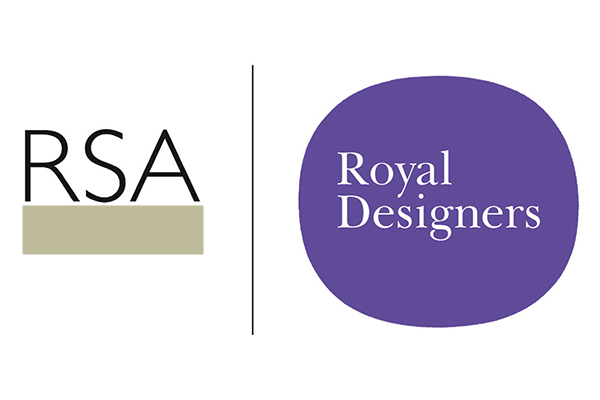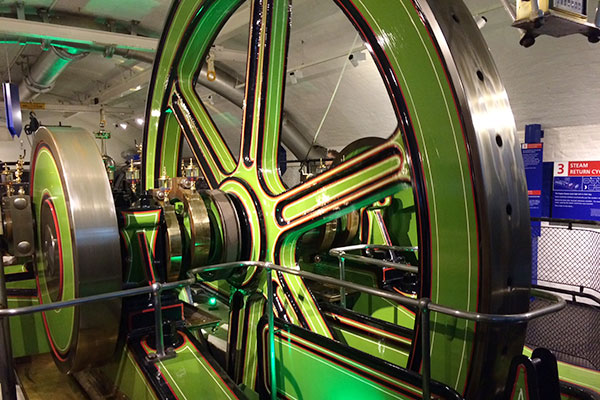Last week the RSA and the Comino Foundation hosted Make It Together, a 24 hour gathering for 30 of the UK’s make space leaders to connect, share ideas, build a network and seek advice from peers. (No idea what a make space is? Have a read of this.)
There was a wealth of inspiring conversation, collaboration and connections made by the end of the second day (video coming soon!) but for now I wanted to focus on one question which came out of the event:
How do I make a make space?
Eddie Kirkby (a UK Fab Lab network facilitator & trainer who helped set up Manchester FabLab) and Marc Barto (organiser of Maker groups and events including NotJustArduino at London Hackspace and Elephant & Castle Mini Maker Faire) passed on some of their learnings to the rest of the group, which I have tried to compress into a nifty ‘how to’ guide.

1) Know WHY you're doing it before you start.
Make sure you know:
a) Why you are doing it and
b) Who you are doing it for.
This may sounds obvious, but knowing the answer to two simple questions will shape everything you do, including opening hours, equipment, community engagement and funding.
For example a make space which aims to find young people employment in the world of digital fabrication will look very different to a make space whose focus in enabling the community to make things which will improve their local area.
This aim may change over the first 6 months – that’s fine too. But you need to have a key aim before you even think about opening.
2) Never invest in a space before you have the community
You need the support and passion of a solid community for a make space to be a success, so make sure this is firmly in place before you invest anything. Piggy-back on existing groups and spaces to gauge and build the level of interest and support.
3) Start before the doors open
Let’s imagine you have a beautiful space, equipment to die for, technicians standing with open arms and you are ready to open the doors to all… but no one knows you exist.
Community engagement prior to opening is key. Having an answer to Number 1 will help define who you engage and how you engage them. Eddie spent 9 months prior to the opening of Manchester Fab Lab speaking to the private sector, local educational organisations and businesses. This ensured that from day 1 of opening they had a whole network of people excited to come in. You need to create demand before you open.
4) Keep that energy going after the doors open
You’ve opened, have a wealth of people desperate to come and have a look at what you’re doing, so make the most of this time. Don’t let this excitement fade. Make sure you have a 3 month engagement plan in place. Run free events, flyer the local colleges, have a call to action and run competitions. Give people a reason to come back and spend time in your space. People love the idea of a make space, will come in, have a look around, be amazed and excited by the facilities and think “Great... But I’ve no idea what to make” – so give them a focus.
5) Put serious thought into how you register yourselves
Don’t rush this decision. Are you going to be a charity? A social enterprise? A limited company? This will somewhat be determined by your answer to number 1, but it is also worth thinking about how this decision will impact on funding. Certain funders will not support limited companies, or prefer to fund not-for-profits, and this can be impactful on future work.
If you are part of a larger organisation it can be easier to initially set up your make space as a ‘project’. This way you are able to test ideas and be more flexible during the earlier stages. If successful, you can roll it out to an independent organization. And if it all doesn’t quite go to plan it is much easier to close a project than a company.
6) Use a combination of funding models
By using a combination of income streams such as funding, sponsorship, membership and charged services you are less at risk if one of those sources dries up.
If you are fundraising, go for larger pots of money. Fundraising is time consuming; don’t waste time on smaller grants. It’s also important to think about what parts of your make space you are fundraising for. Using funding for operational activities can be risky. It is better to use funding for programmes or projects that add to your offer, but are not essential for the running of your space. If funding comes to an end after an agreed period of time and you are using it to pay staff time or cover rent this could be problematic.
If you want your space to be completely independent and stay afloat with no fundraising, you need to look at your offer. This again comes back to question 1: Why are you setting up a space? If you aim is to offer free access to all, then realistically a self-sustaining model is unlikely to work.
7) Get the slow build/space ready balance right
While it can be tempting to throw your doors open the second you secure a space and adopt the 'I’ll build up my equipment over time' approach, this can run the risk of disengaging your community. It’s hard for people to get truly excited about a space that hasn’t got a huge amount of stuff in it.
The other side of this is spending time and money getting your space fully kitted out, to find that when you open the doors your equipment isn’t right or the layout is flawed. It is important to find a good balance.
Have you been involved in setting up a make space? What would you add to this list? We would love to hear from you!
Follow @RSAremake to more information on the RSA's work in the Maker sphere.
Related articles
-
Royal Designers at 80: a celebration of RSA design past, present and future
Melanie Andrews
2016 marks the 80th anniversary of the Royal Designers for Industry (RDI). In a special event at the RSA we looked back at some of the life-changing works of the past.
-
Dyslexics think differently
Jim Rokos FRSA
Jim, a former winner of the RSA Student Design Awards, challenges perceptions of dyslexia by highlighting its positive effects and close association with design.
-
Blog: Saving Design Thinking from itself
Sevra Davis
We have arrived at a critical moment for design thinking. Sevra Davis explores how we can champion a radical new future for design.




Be the first to write a comment
Comments
Please login to post a comment or reply
Don't have an account? Click here to register.